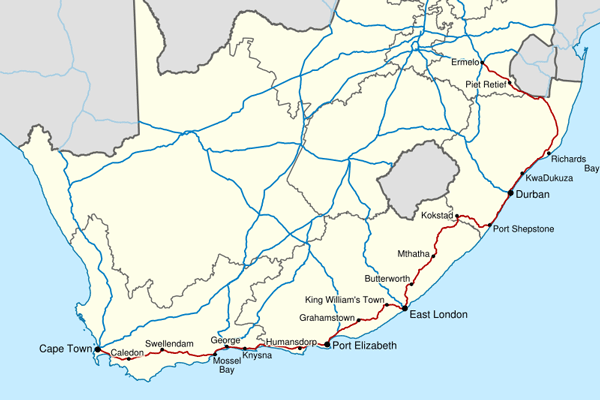All you need to know about the N2WCR.

Will there be toll gantries between East London and Mthatha?
No. All the upgrading done on the N2 between East London and Mthatha and along the R61 between Mthatha and Port St Johns since 2011 have been funded from SANRAL’s non-toll portfolio.
Will the greenfields portion proceed between Port St Johns and Port Edward?
Yes. The decision to proceed was taken by the Presidential Infrastructure Coordinating Commission in December 2015.
Are there any court cases against SANRAL regarding the N2WCR project?
SANRAL is supporting the Department of Environmental Affairs in one court case regarding the N2WCR. All the communities originally involved in this case have withdrawn, leaving only one remaining applicant – a member of a local anti-mining NGO.
Does the new route run along the coast?
The new route is not a coastal route. Most of the route will run 10-15km inland, away from the coast, to avoid the most sensitive areas of the Pondoland centre of plant endemism. The route only comes closer to the coast west of Port Edward so that it can link up with the current R61.
Are there any communities opposing the N2WCR project?
There is no community that opposes the N2WCR. However, there are some members of some of the communities living near the proposed Xolobeni sand dune mine who have raised objections.
Why do some families affected by land acquisition receive money and others don’t?
If any family loses some land used for the new road, but remain living on the remaining portion, they are compensated for the portion of land they lose. The amount is determined by a professional valuer, and is affected by the size and any improvements and crops that will be lost.
However, if a homestead must be entirely relocated, SANRAL obtains a new piece of ground nearby and rebuilds new, brick houses to the same size as the original plot and structures. Thus, these families receive new land and all their costs are covered and, therefore, do not receive any additional compensation over and above their new house and new land.
Due to legal and procedural requirements, there can be a substantial wait between contract signing and payment. This delay can unfortunately lead to rumours that payment will not occur or that money has been paid to the chief.
Does SANRAL pay people to move their family’s graves?
A grave does not constitute an improvement and SANRAL cannot pay families for their graves. However, SANRAL does cover all the costs involved for the exhumation and reburial in a new location to the satisfaction of the family. This includes all costs for permits, the undertaker, new graves, coffins and tombstones, as well as animals for slaughter, groceries and the travelling costs of family members to attend the traditional ceremony.

